Greenhouse furnaces: types and features of the device

The crop yield directly depends on weather conditions, in particular, on the temperature in the greenhouse. In regions with a harsh climate, special structures are built to heat greenhouses for timely harvesting. Their size and number depends on the area of the greenhouse. Since the heating devices will be in operation for a long time, significant material costs for equipment are required. Consequently, the cost of the harvest will also grow.
Types of heating and types of stoves
Greenhouses are heated in several ways:
- biological;
- electric;
- air;
- gas;
- stove.

Stove heating is the most economical heating option and can be used with most types of fuel. They can work on both wood, coal, gas and even pellets.
Furnace heating has one significant drawback - overdrying of the air due to the rapid heating of the equipment.
- Stove heating on sawdust, which is a waste of woodworking enterprises. Therefore, the purchase of this fuel does not require large expenditures. For the construction of a sawdust stove, it is necessary to purchase a barrel made of tin, preferably a couple of barrels, a gas cylinder and a piece of pipe.
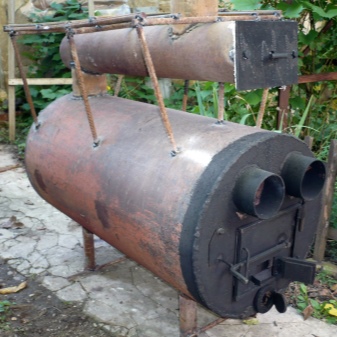
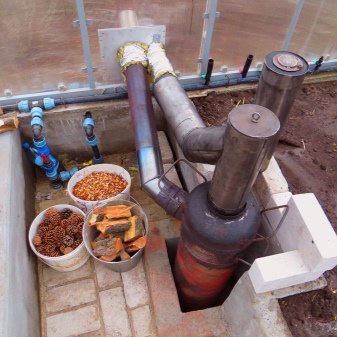
- Waste oil stove is an economical heating option with long burning. Those exposed to waste oils are disposed of from any vehicle fleet, so fleet workers will be happy to share the oil.
- To heat the greenhouse in the cold season, stove-stoves are used, which provide good heating.
- Kuznetsov's brick heating stove is of particular interest to gardeners due to its high efficiency (80%). However, the brick body of the stove must be insulated with basalt material.
- The miracle diesel oven is an excellent solution for a greenhouse room where there is no connection to the central heating system. The stove is used both as an additional and as the main source of heat.
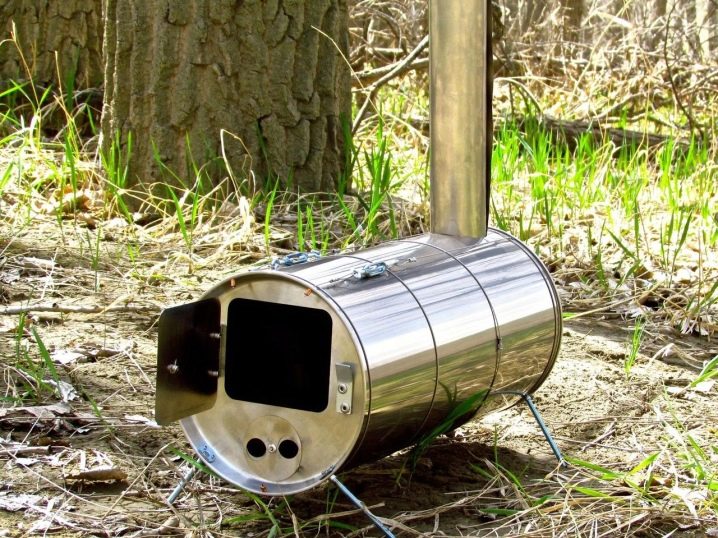
There are many types of ovens for heating greenhouses, which differ from each other:
- the principle of heat transfer;
- convection;
- radiation;
- main and additional details;
- fuel combustion chamber;
- pipes for air supply.


The scheme and installation of a specific furnace can be carried out only after studying all the details of the heating process. You need to know that stoves for large greenhouses and small ones differ in order.
Fuel options
Greenhouse heating involves the use of a variety of fuels. The most readily available fuel is wood. The design of wood burning equipment is not complicated. Long-burning stoves can also be stoked with wood. For a small greenhouse, it will be sufficient to load fuel once a day.
Coal can be used for better heating, its main advantage is its high calorie content, and its disadvantages are a lot of waste: ash, dust. And also during the combustion of coal, harmful and toxic gases are emitted into the atmosphere, and some types of coal are even capable of spontaneously igniting if the storage conditions are not observed.

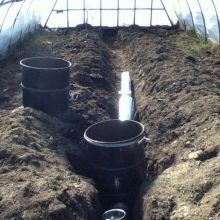
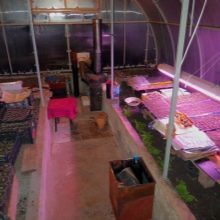
Recently sawdust has been used as fuel for heating. The stoves in which they generate heat are classified as long-lasting structures. Quality heating is accompanied by a slight smoke. This version of the oven is easy to do on your own. The stove has a fairly high efficiency.
Greenhouse structures can also be heated by stoves in which fuel briquettes are used as fuel. Compared to coal or wood, such fuel has better characteristics, for example, less smoke, faster combustion and no harmful effects on the air. The use of fuel briquettes allows avoiding sparking, and long burning - to maintain the required temperature. A stove with this type of fuel has high efficiency, environmental friendliness and economy.
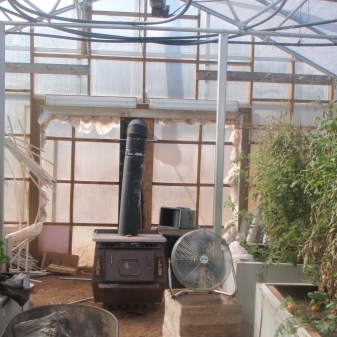
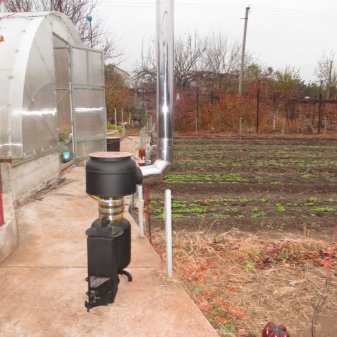
Some summer residents use liquid as fuel. However, this is not entirely suitable for heating due to toxicity and high cost.
The optimal choice
The best option for heating greenhouses is to install a stove stove, which is considered the most economical and easy to use. The heater consists of a barrel with a door for the firebox, a chimney, a pipe for heat escaping outside, a lintel in the upper part.
Heating occurs due to the movement of smoke:
- Hot smoke moves through the pipe, the pipe is installed either on the sides of the greenhouse or in the center.
- The oven surface radiates heat.
- Warm air forms above the bulkhead and flows out through the pipe.
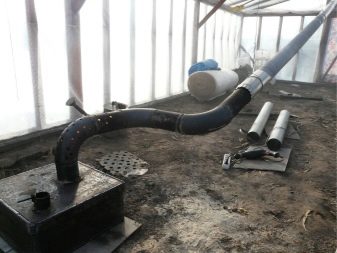
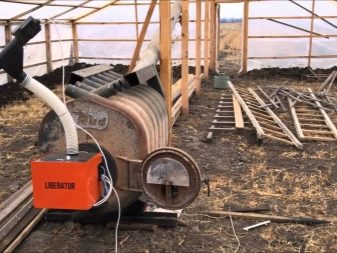
Waste lumber, coal or firewood can be used as fuel. The quality of combustion depends on the type of fuel and the penetration of air into the furnace chamber of the furnace. This heating method is suitable for those who can often control the combustion process. This is the only drawback of the potbelly stove.
For long-burning stoves, this disadvantage is an advantage: fuel can be added to them much less frequently. They also use less fuel and reduce heating of the furnace walls without reducing heat transfer. They are very similar in performance to infrared heaters.
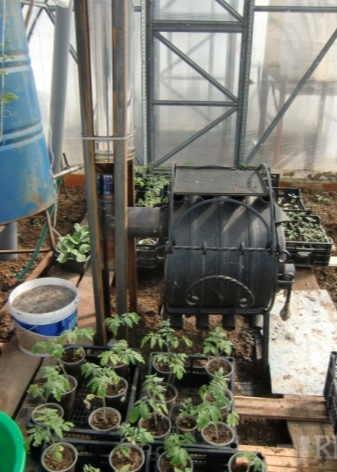
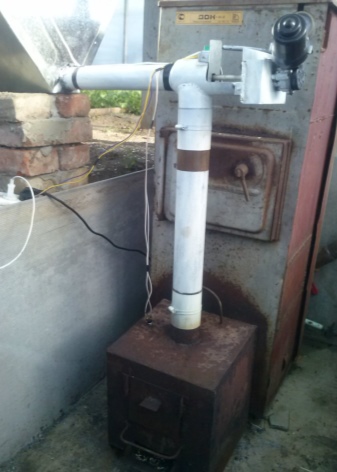
The long-burning furnace has two chambers, one of which completely burns the residual fuel, and the other burns only the main part. Oxygen access to the chamber is limited, as a result of which the fuel does not burn out immediately, but smolders for a long time with the release of a large amount of heat.
Various household waste can be used as fuel for long-burning stoves, but without harm to plants. The constancy of the temperature in the greenhouse provides the necessary conditions for the growth of crops.
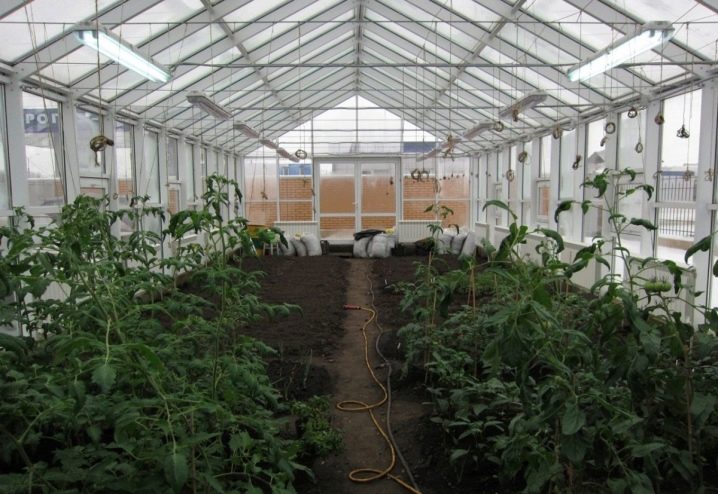
However, there are many factors to consider before installing such an oven.
Central wood-fired construction: pros and cons
The central wood-burning structure is made of metal or brick materials. Moreover, the larger the greenhouse, the larger the furnace structure. It was called central because of the need to install it in the middle of the greenhouse, which makes it possible to optimally distribute heat over the entire area of the greenhouse.
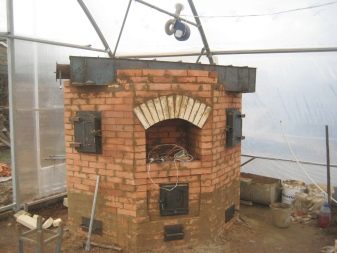
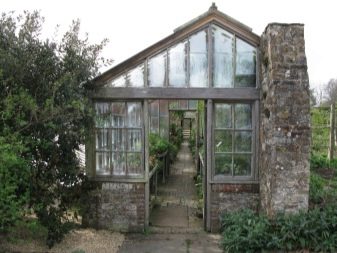
This design runs on wood, so no special devices are required for operation.
The central wood-burning stove has many disadvantages.
- Frequent watering of plants and constant humidification of the air in the greenhouse. Due to the rapid heating, the air dries quickly, and therefore the soil. Some crops cannot tolerate this kind of greenhouse climate. Installing barrels of water next to the stove will compensate for this disadvantage a little.
- Another important point is the uneven distribution of hot air over the entire area of the greenhouse. The highest temperature will be maintained near the stove, and the farther away the plants, the colder the air. As a result, some of the plants around the perimeter will freeze. This must be taken into account if the greenhouse is large and with a high ceiling.
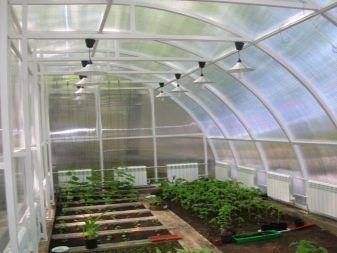
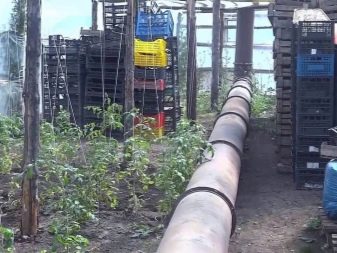
You can even out the temperature using induction lamps for a long time. They are located in the most remote parts of the greenhouse. And also heating with an infrared heater will preserve crops.This option is not suitable for greenhouses with low ceilings: you must make a choice in favor of a wood-burning stove or an induction lamp. If a stove is chosen, then small fans must be installed nearby to disperse the heat.
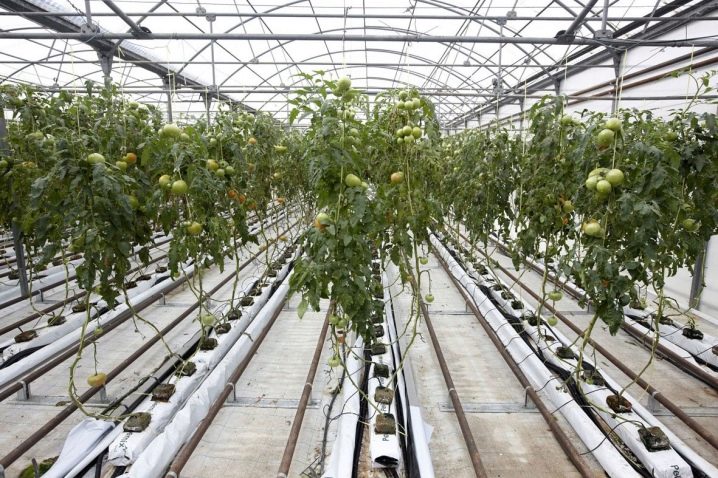
Bubafonya
Stove stoves have low efficiency and the need for frequent additional fuel loading. Craftsman Bubafonya came up with a homemade design, which differs in the principle of fuel combustion.
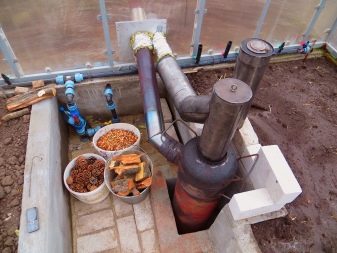
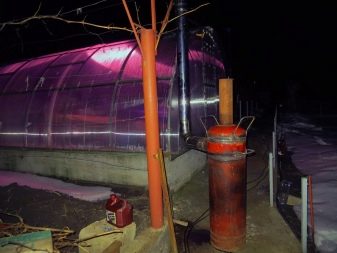
Features and device
The main difference in the Bubafoni stove is the upper intake of air mass, which led to such positive properties as:
- longer burning of fuel;
- there is no need for frequent loading of the furnace;
- better heat retention;
- profitability, because such a furnace can be made from scrap materials: barrels of iron or metal; as fuel, you can use not only firewood, but also boards, chips, cardboard or shavings. And also the Bubafonya oven works autonomously, that is, without the use of electrical energy.

There are also disadvantages to this design:
- outwardly looks unpresentable;
- average heat transfer;
- carbon formation on the walls of the furnace;
- condensation forms, which freezes in winter and blocks the main pipe;
- during air intake, sometimes fire appears from the duct;
- with the installation of such a stove, it is necessary to take care of ventilation in the greenhouse.
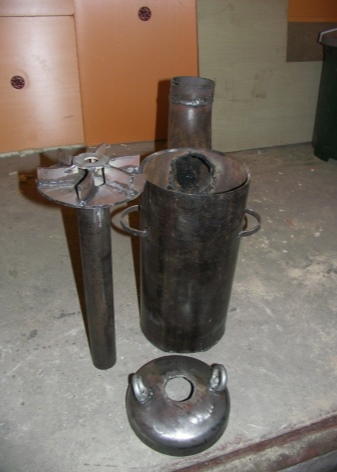
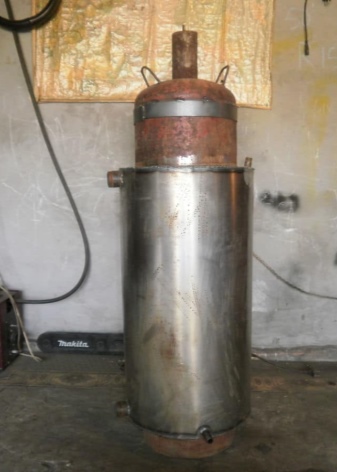
To make Bubafonya yourself, you need to know the device and how the oven works. Air enters through the top pipe and the fuel starts to burn. When burning, ash will accumulate on the surface of the fuel and prevent it from burning. Because of this, you need to take care of installing the press in the form of a metal pancake, the diameter of which is slightly smaller than the barrel. A hole is drilled in the middle of the pancake for a pipe with oxygen.
The fuel burns and the press is lowered, displacing the ash between the pancake and the wall. Such ash cools down and leaves through the chimney with the rest of the combustion products.
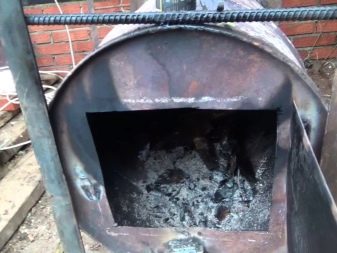
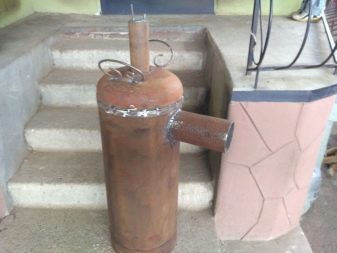
Manufacturing
Having studied the drawings and diagrams of the furnace, having understood the principle of operation, you can make a Bubafon with your own hands. An important point is the choice of capacity. A large-diameter pipe, a barrel, an empty gas cylinder can be used as it.
Whatever it is, you will have to complete the structure:
- get rid of the cover;
- to obtain a container with an open top, it is necessary to weld the bottom;
- preparation of the press: a metal sheet circle is suitable for this;
- drill a hole for the pipe in the center and attach the pipe by welding;
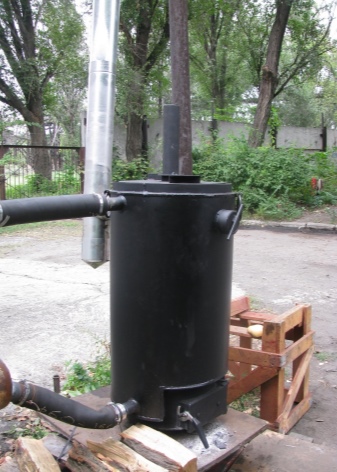
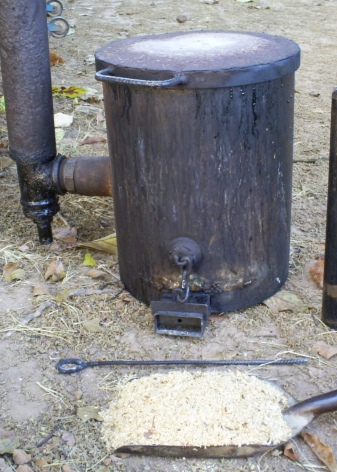
- a pipe with a large diameter is also welded to the cover so that the first pipe can slide freely;
- to create a gap so that air passes between the surface and the fuel, attach a metal profile to the pipe;
- for the firebox, make a door from an iron sheet and attach;
- make a hole for the chimney on top of the container and attach the pipe;
- make legs for the stove, if the bottom is not "worth it".
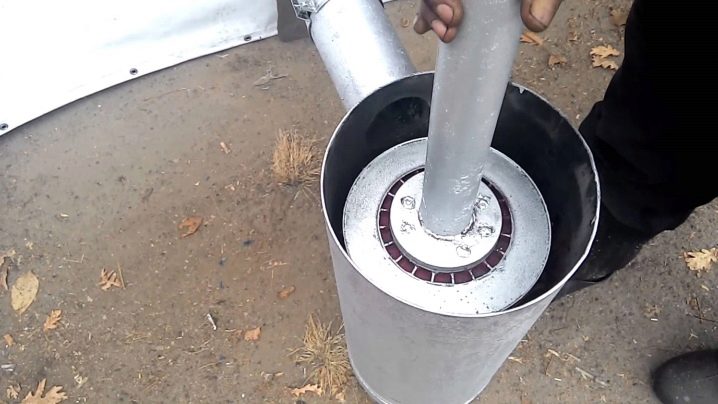
When making a chimney, it is necessary to take into account the need to create resistance, which will allow a longer heat retention.
Before installing the furnace, it is necessary to make a foundation of bricks and a substrate of galvanized sheet under it. This will help to avoid heating the bottom of the stove, which leads to the death of nearby crops. The foundation also retains and diffuses heat.
After installation, the oven must be lined with bricks to improve heat transfer.
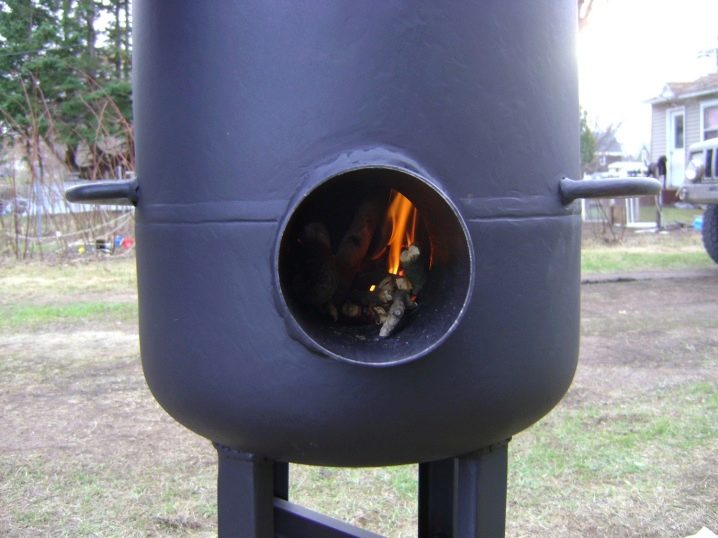
Buleryan: distinctive features
Buleryan is a long burning stove, very similar to a potbelly stove. Here, too, the air is heated by hot smoke from pipes around the perimeter of the greenhouse, becoming also hot. Unlike a potbelly stove, in Buleryan the air is heated differently: cool air enters the lower opening of the pipe and begins to heat up by the body of the furnace space, where the pipes adjoin. As a result, cool air heats up to 60 degrees and leaves through the upper opening. Fuel for the stove: firewood, coal, pellets, sawn timber waste.
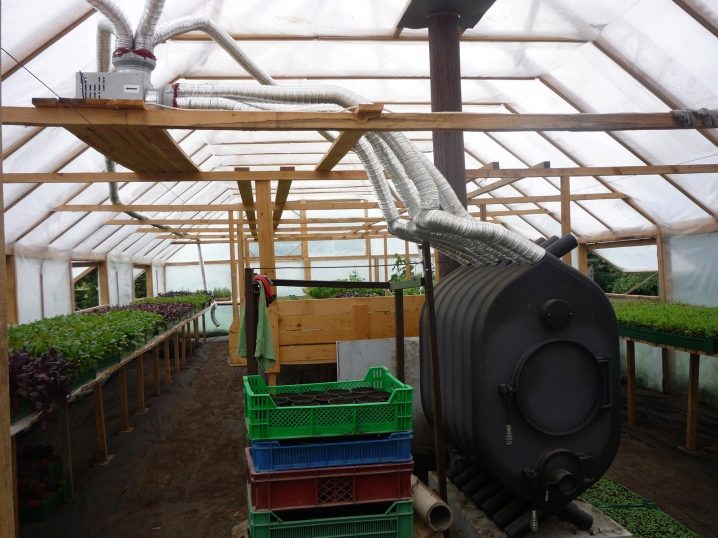
Buleryan, in contrast to the potbelly stove, has some advantages.
- Greater efficiency as a result of flue gas afterburning. As a result, less fuel is consumed, and more heat is obtained.
- Complete combustion of fuel.
- Having flooded Buleryan once, it can work for three days, which greatly facilitates the work of the gardener. For people who cannot put fuel on every day, this is a great option.
Buleryan is often called a design without flaws, but there is still one drawback that is not related to the design of the furnace, productivity and economy: the release of corrosive components that are not recycled.

Initially, Buleryan was used by Canadian lumberjacks, who often had to lead a nomadic lifestyle. Therefore, the oven had to provide safety and heat the room as quickly as possible.
To quickly heat up the greenhouse, you need to maintain a constant combustion process., however, Buleryan works mainly in the decay mode. With constant intense burning, the metal surface of the furnace will burn out very soon.
Dry chips, cardboard, paper are used to ignite the furnace. The main thing is that they are dry and burn out quickly. The combustion process is monitored through a glass door or throttle. When the fuel turns to coal, the fuel is added again. Coals cannot be used as fuel, since Buleryan is a wood-burning stove. It doesn't take long to heat up even a large greenhouse.

It is strictly forbidden to increase the temperature in the oven to extremely high temperatures. Firstly, the metal surface will burn out, and secondly, excess heat will go out into the street, since the thermal conductivity of the pipes is limited, as a result of which excess heat is not transferred to the air. It is also not recommended to use coke as a fuel - this will lead to damage to the device.
When installing Buleryan, it is necessary to adhere to the rules of the fire department. The stove is installed on a non-combustible surface, for example, on bricks laid flat or on a metal support.
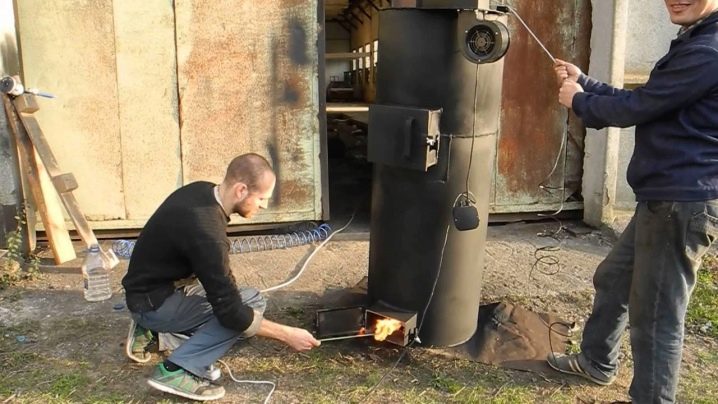
When making a stove with your own hands, an important element is a chimney, to which there are requirements:
- chimney material: brick, concrete, metal;
- chimney parameters.
There is no difficulty in installing the Burelyan stove, it is enough to prepare the place, correctly make a chimney and you can start heating.
For the types and features of ovens for greenhouses, see the following video.





























































The comment was sent successfully.